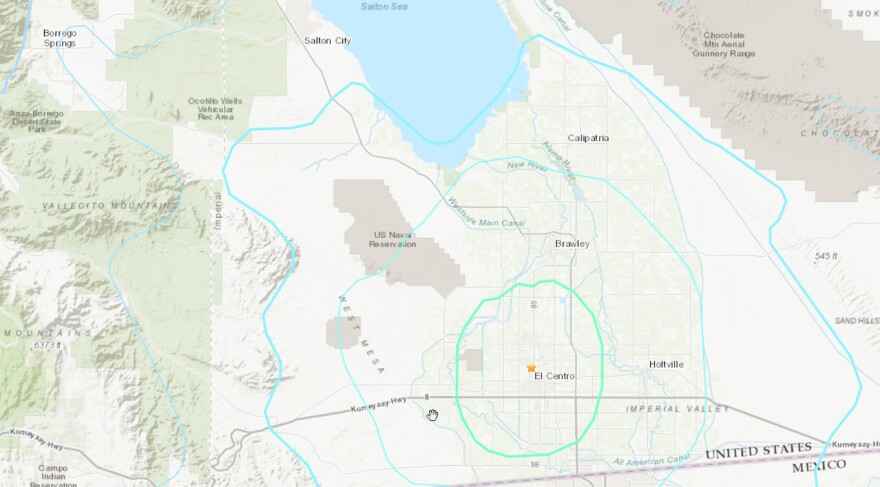Earthquake watchers say Monday’s earthquake swarm in El Centro was far from typical and the temblors raise concern about what might be coming.
Several earthquakes and aftershocks were reported just after midnight although there were no reports of injuries or damage.
The largest was a 4.8 magnitude temblor, according to the U.S. Geological Survey.
That was the largest shaker in the series, and it was centered a half mile northwest of El Centro. It was 3.6 miles south of Imperial and 9 miles northwest of Calexico. It was about 10 miles deep.
The shaking was felt in San Diego and the earthquakes and aftershocks set off the state’s early warning earthquake system.
“Between 12:36 and 12:59 a.m. there were four activations of the shake-alert earthquake warning system,” said Robert deGroot of the ShakeAlert Earthquake Early Warning System. “Three of which there were alerts delivered by several of our alert providers to the public throughout the region, in one case to 87,000 people.”
Those alerts were delivered a few seconds ahead of the shaking.
“So, much like last night, where people in places like Murietta and other places were getting alerts for several of the earthquakes last night. This is the way it works. The system is operating as expected,” deGroot said.
The U.S. Geological Survey says there were more than 65 quakes larger than magnitude 2 on the Richter scale. Two were higher than magnitude 4.
Some of the geological activity included,
- A 3.5 magnitude earthquake reported at 6:15 a.m. and centered 0.8 miles southeast of El Centro;
- A 3.4 magnitude earthquake reported at 6:04 a.m. and centered 0.4 miles east southeast of El Centro;
- A 3.0 magnitude aftershock reported at 3:33 a.m. and centered 1.6 miles northwest of El Centro;
- A 3.6 magnitude aftershock reported centered about six-tenths of mile southeast of El Centro at 2:18 a.m.; and
- A 3.9 magnitude earthquake reported at 12:59 a.m. followed by three smaller quakes at 1:26 a.m., 1:30 a.m. and 1:38 a.m.
The region is known for earthquake activity, but swarms are typically linked to the San Andreas fault system which runs under the Salton Sea.
These faults are linked to an active fault system that’s been quiet for several hundred years.
“As far as we know this fault has not ruptured in the historical period, which really only goes back to the late 1800s. We really don’t know much before then,” said Thomas Rockwell, a geologist at San Diego State University. “But it is well expressed on the lakebed. And even through the agriculture which probably means its ruptured in the last 300 years.”









